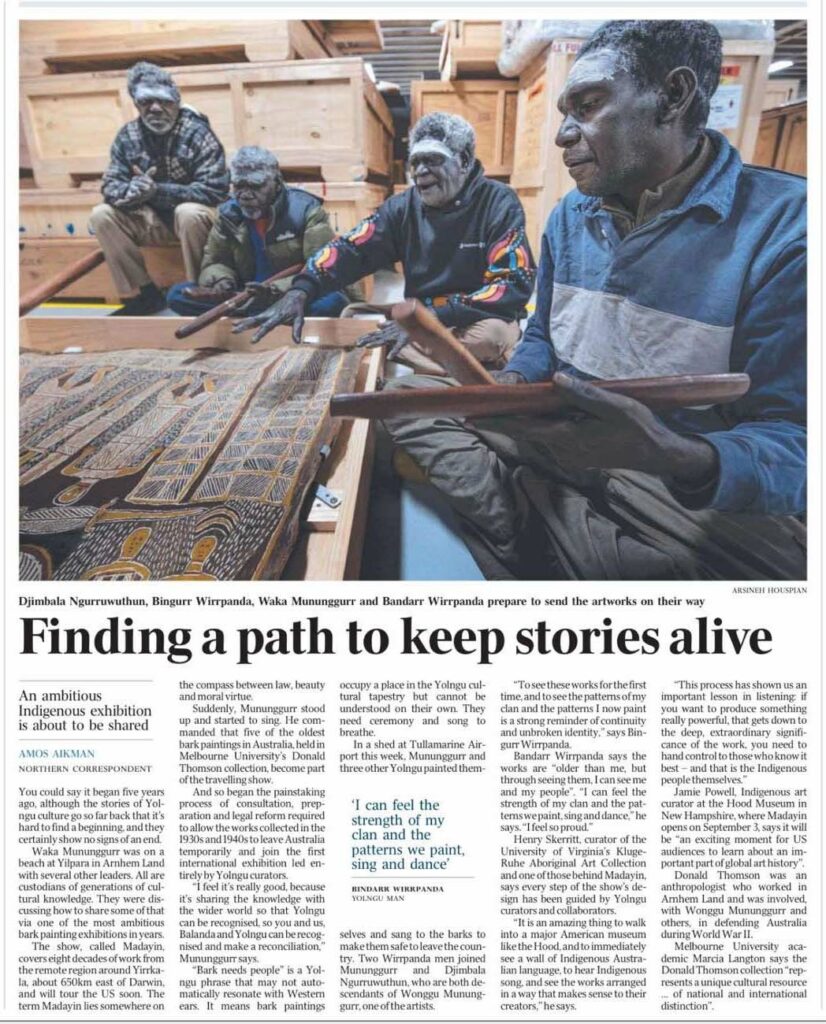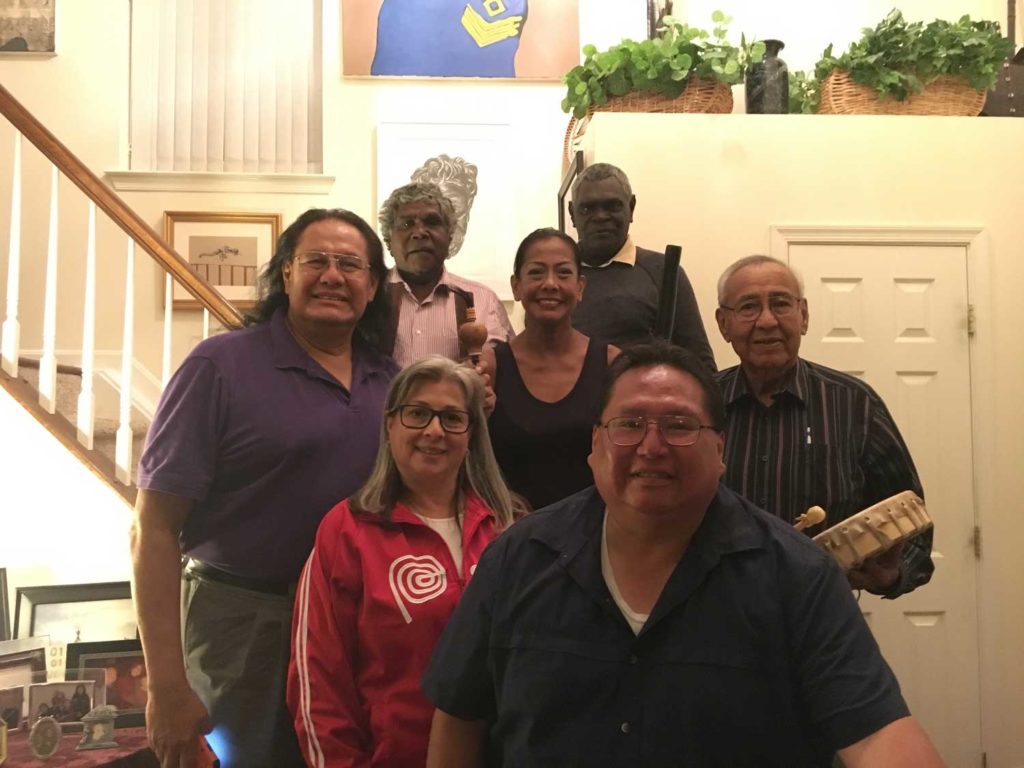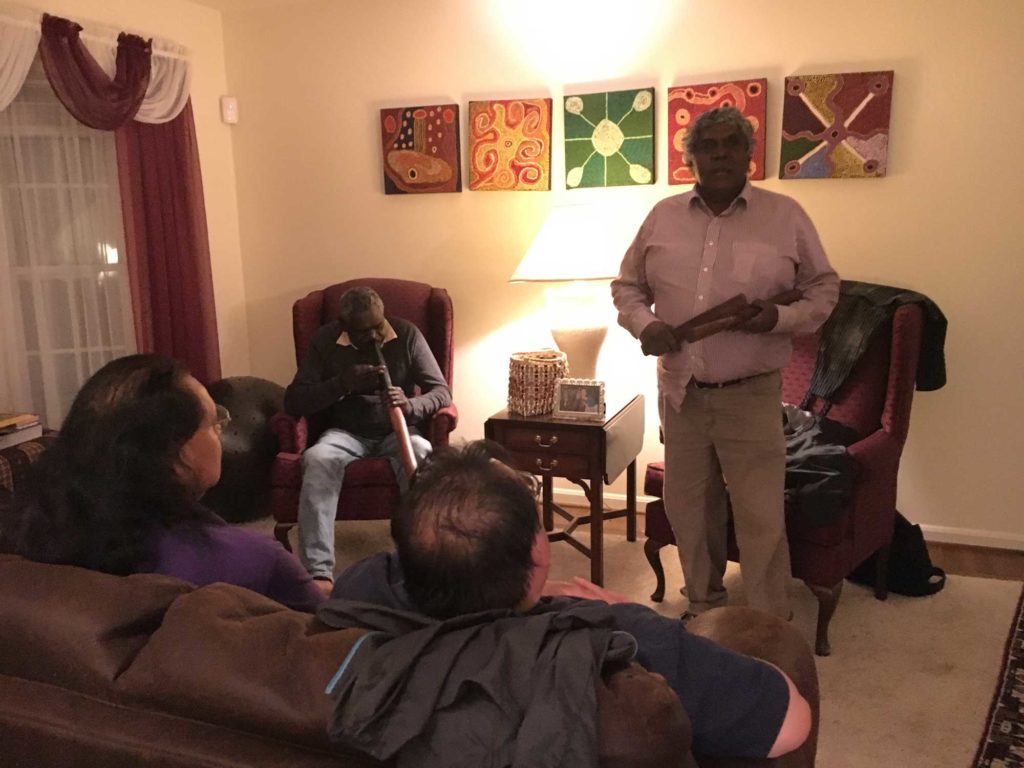
An ambitious Indigenous exhibition is about to be shared
You could say it began five years ago, although the stories of Yolngu culture go so far back that it’s hard to find a beginning, and they certainly show no signs of an end. Waka Mununggurr was on a beach at Yilpara in Arnhem Land with several other leaders. All are custodians of generations of cultural knowledge. They were discussing how to share some of that via one of the most ambitious in years.
The show, called Madayin, covers eight decades of work from the remote region around Yirrkala, about 650km east of Darwin, and will tour the US soon. The term Madayin lies somewhere on the compass between law, beauty and moral virtue.
Suddenly, Mununggurr stood up and started to sing. He commanded that five of the oldest bark paintings in Australia, held in Melbourne University’s Donald Thomson collection, become part of the travelling show.
And so began the painstaking process of consultation, preparation and legal reform required to allow the works collected in the 1930s and 1940s to leave Australia temporarily and join the first international exhibition led entirely by Yolngu curators.
“I feel it’s really good, because it’s sharing the knowledge with the wider world so that Yolngu can be recognised, so you and us, Balanda and Yolngu can be recognised and make a reconciliation,” Mununggurr says.
“Bark needs people” is a Yolngu phrase that may not automatically resonate with Western ears. It means bark paintings occupy a place in the Yolngu cultural tapestry but cannot be understood on their own. They need ceremony and song to breathe.
In a shed at Tullamarine Airport this week, Mununggurr and three other Yolngu painted themselves and sang to the barks to make them safe to leave the country. Two Wirrpanda men joined Mununggurr and Djimbala Ngurruwuthun, who are both descendants of Wonggu Mununggurr, one of the artists.
“To see these works for the first time, and to see the patterns of my clan and the patterns I now paint is a strong reminder of continuity and unbroken identity,” says Bingurr Wirrpanda.
Bandarr Wirrpanda says that works are “older than me, but through seeing them, I can see me and my people.” “I can feel the strength of my clan and the patterns we paint, sing and dance,” he says. “I feel so proud.”
Henry Skerritt, curator of the University of Virginia’s Kluge-Ruhe Aboriginal Art Collection and one of those behind Madayin, says every step of the show’s design has been guided by Yolngu curators and collaborators.
“It is an amazing thing to walk into a major American museum like the Hood, and to immediately see a wall of Indigenous Australian language, to hear Indigenous song, and see the works arranged in a way that makes sense to their creators,” he says.
“This process has shown us an important lesson in listening: if you want to produce something really powerful, that gets down to the deep, extraordinary significance of the work, you need to hand control to those who know it best – and that is the Indigenous people themselves.”
Jamie Powell, Indigenous art curator at the Hood Museum in New Hampshire, where Madayin opens on September 3, says it will be “an exciting moment for US audiences to learn about an important part of global art history.”
Donald Thomson was an anthropologist who worked in Arnhem Land and was involved, with Wongguu Mununggurr and others, in defending Australia during World War II.
Melbourne University academic Marcia Langton says the Donald Thomson collection “represents a unique cultural resource… of national and international distinction.”

